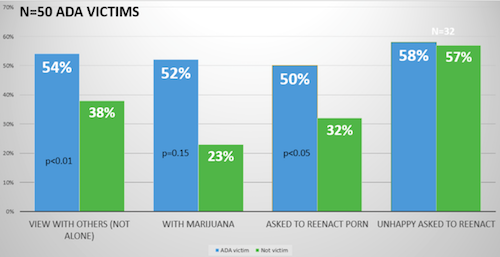Professor Discusses Pornography with Federal Workgroup.
 On April 11, the Federal Interagency Working Group on Teen Dating Violence invited Emily Rothman to discuss pornography and its possible link to adolescent dating abuse.
On April 11, the Federal Interagency Working Group on Teen Dating Violence invited Emily Rothman to discuss pornography and its possible link to adolescent dating abuse.
Sexually explicit media “is a variable worth paying attention to if we’re trying to figure out what’s happening in adolescent relationships,” says Rothman, associate professor of community health sciences.
While there is plenty of concern about adolescents looking at pornography—and arguments that pornography is a “public health crisis,” Rothman says the relationship between exposure and unhealthy behavior merits more, and more rigorous, study.
Rothman presented the results of two recent studies she led of adolescent pornography use and dating violence among a sample group of 16- to 17-year-old, mainly Black and Hispanic, youth in Boston.
“Sexually explicit media consumption was common in my sample,” Rothman says. Overall, the study showed a correlation between pornography viewing and dating abuse victimization, with adolescents being asked to reenact what their partner had seen in pornography and feeling unhappy about being asked to do so.
Rothman also notes about a third of participants in the quantitative study reported pornography was their main source of information about sex. With the majority of sexually explicit media (several of her presentation slides showed) depicting violent and degrading behavior by men toward women without that behavior being clearly consensual, “that’s a concern,” says Rothman.
However, “I’m not willing to say across the board, this is something that is always harmful in all contexts to all people and doesn’t have any place in society or in healthy sexuality,” she says. “What is depicted, by whom, for whom, and where, when, how, and why it is consumed matters.”

Rothman, who teaches a course on pornography and public health, says banning something outright is not always a fitting approach. “Banning alcohol, saying alcohol is bad for all people at all times, is not correct and it’s unreasonable,” she says. “But there certainly are health problems associated with alcohol.”
In her presentation, Rothman concluded what her research indicates is a need for education—high-quality and available sex education so adolescents don’t rely on pornography for information, and also what Rothman calls “pornography media literacy,” in which adolescents can learn the difference between real-world, healthy sexuality and what they might see in porn.
The Federal Interagency Working Group on Teen Dating Violence is comprised of 18 agencies from the US Departments of Health and Human Services, Justice, Education, and Defense. Since its inception in 2006, the workgroup has coordinated teen dating violence programming, policy, and research activities to combat violence from a public health perspective. The workgroup invites experts from the field to give monthly presentations.